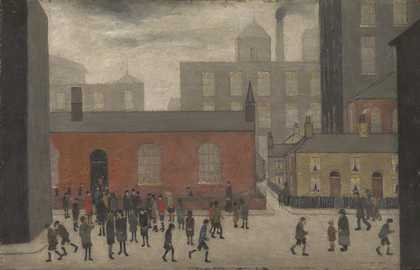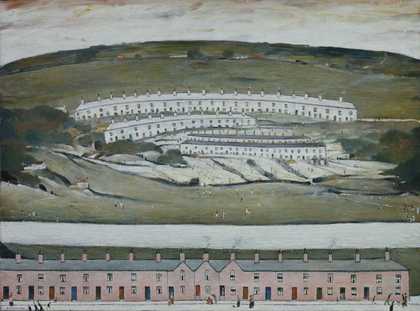I saw the industrial scene and I was affected by it. I tried to paint it all the time. I tried to paint the industrial scene as best I could. It wasn't easy.
Tate Britain presents a major exhibition of landscapes by the much-loved British painter L.S. Lowry┬ĀŌĆō the first of its kind held by a public institution in London since the artistŌĆÖs death.
Focusing on the best of LowryŌĆÖs urban scenes and industrial landscapes including ░š▓╣│┘▒ŌĆÖs Coming Out of School 1927 and The Pond 1950 alongside significant loans, this timely and carefully selected exhibition aims to re-assess LowryŌĆÖs contribution to art history and to argue for his achievement as BritainŌĆÖs pre-eminent painter of the industrial city.
This film file is broken and is being removed. Sorry for any inconvenience this causes.
Lowry at Tate Britain
Lowry and the Painting of Modern Life demonstrates Lowry's connections and debts to French painting of the later 19th century and its determination to make art out of the realities of the emerging modern city. It reveals what Lowry learned from the strange symbolist townscapes of his French born teacher Adolphe Valette and demonstrate important parallels with the painters of modern life Vincent van Gogh, Camille Pissarro, Georges Seurat and Maurice Utrillo, drawing upon these artistsŌĆÖs continuous search for ways to depict the unlovely facts of the cityŌĆÖs edges and the landscape made by industrialisation.

L.S. Lowry
Coming Out of School (1927)
Tate
For Lowry modern painting needed to represent the remaining rituals of public life: football matches and protest marches, evictions and fist-fights, workers going to and from the mill. Without his pictures, Britain would arguably lack an account in paint of the experiences of the 20th-century working class. Lowry and the Painting of Modern Life reveals how Lowry developed his structure of the city based on his personal relationship to social space. Works such as Pit Tragedy 1919 (The Lowry, Salford); An Accident 1926 (Manchester Art Gallery) and The Fever Van 1935 (Walker Art Gallery, Liverpool) demonstrate LowryŌĆÖs unique engagement with street life and his development of a cast of characters portraying the ways in which his subjectsŌĆÖ lives unfold and become unstuck, highlighting the unpredictability and unsteadiness of working-class life.
This film file is broken and is being removed. Sorry for any inconvenience this causes.
Excerpt from 'Mister Lowry'
As a modern painter Lowry wished to show what the industrial revolution had made of the world, yet his dominant status in British art coincided with a disappearance of the industrialised world he engaged with. The exhibitionŌĆÖs final room presents for the first time all eight of his less well known, late industrial panoramas, where a leap up to ŌĆśhistory paintingŌĆÖ size indicates the measure of his final ambition. These large panoramic landscapes fall into two groups: the first, from the 1950s, are titled, with intentional generality, Industrial Landscapes. The second, less well known group was painted in the 1960s in the mining valleys of South Wales, the heartland of the Labour movement. In both the tone is valedictory.


